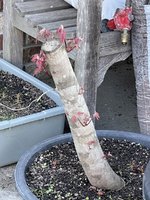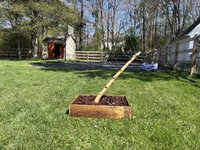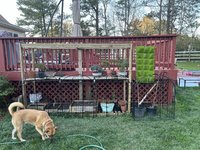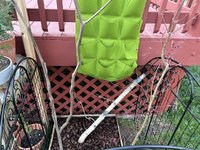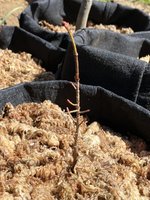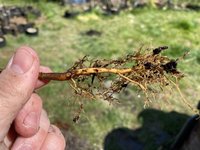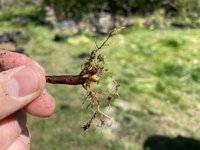I think sugar maple, Acer saccharum, is a species that needs to be worked with, and collectively we should document our successes and failures because I think this species could make an excellent bonsai. The point of bringing up JM was to demonstrate by comparison what traits we look for in bonsai. Clearly silver maple, is largely lacking in traits that would make it stand out at a bonsai show.
Now, Acer x freemanii which is (A. rubrum x A. saccharinum) or (A. saccharinum x A. rubrum), the Freeman maple, commonly used as a street tree, is a silver maple hybrid. It has the benefit of GOOD autumn color that persists in a fair number of its cultivars. That trait alone would make Acer x freemanii worth working with as bonsai. It also has hybrid vigor so it is as vigorous or slightly more vigorous than the species silver maple. But in general genetically pure silver maples have no traits that will stand out on a bonsai bench, I recommend those that don't already have one on their benches to give the silvers a pass and seek out x freemanii or Acer rubrum or Acer saccharum as your alternatives. Just sayin'.
HOW LOW TO CHOP? on a collected deciduous trunk. This is a guideline, not a "rule", no penalties is you ignore me here. I usually chop at about 1/3rd the final height I envision. If I want a 3 foot tall tree, chop at 1 foot. Want a 12 inch tall tree, chop at 4 inches. The generalized pattern for bonsai is first third is trunk, second third is major branching, last third is the tertiary branching and leaves. Give or take a little most award winning bonsai break down to roughly these proportions. The proportions are visually pleasing and our minds expect them. ONE CAN DEPART WILDLY from this "guideline" if one has an artistic idea or goal in mind. But if you don't know what to do, follow the "rule of the thirds" .
When looking for what to do, before you cut anything, ask yourself what is the most attractive aspect of the tree sitting on the bench in front of me. And then ask what this tree's most attractive "future traits" might be. Then design to highlight these traits.
So if the trunk has an attractive bend, that's something to keep in mind, don't cut it away. If in the future autumn leaves are the best seasonal feature, a design with many twigs to display a nice dome or cloud of colorful leaves would be better than a design that keeps the tree sparse and focuses on deadwood or something. Adapt design to the tree in front of you. If you are not certain, another year or two in a grow box will not hurt.

